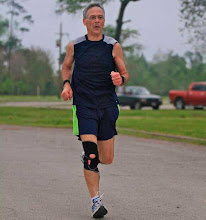After starting the longer commute, I heard a news item on the subject of "hypermilling." There is a website that is devoted to it: http://www.cleanmpg.com/. I found that drivers were practicing a set of techniques that yielded incredible fuel mileage. The drivers were mostly using these techniques with hybrids, but many could be used in any vehicle. Some of the ideas sounded a little extreme to me, like coasting down long downhill sections with the car turned OFF. However, most of the techniques seemed reasonable and safe, and I experimented with and adopted many of them. I began charting my mileage in March, 2008, and continued charting through October, 2009. During these 19 months, I had a series of increasing mpg records in this car. In 2009, I was able to average 36.3 mpg, and the highest I ever achieved was on a single tankful of fuel was 38.6 mpg.
Some of the techniques I applied:
- Keeping tires inflated to the sidewall rating (44 psi cold) instead of the 30 psi on the sticker inside the door. This isn't over-inflation, just maximum safe inflation. Higher pressure yields lower rolling resistance.
- SLOW acceleration-- I watched my tach more than my speedometer when I accelerated. I keep my foot light enough that the tach doesn't wind up in each gear; keeping my tach low and steady got me through the gears and up to speed, but took maybe an extra 30 seconds.
- My driving was mostly on the highway. I used the cruise control and rarely drove over 60 mph.
- Watching farther ahead-- if traffic seems to be slowing, I back off, allow a greater distance to open up between myself and the vehicle ahead of me. Then, when cars ahead are braking, I can usually let off the accelerator and coast, slowing down without braking. If I allow enough space, the vehicles ahead are starting to speed back up before I get close enough to brake. (Coasting is like free mpg; braking converts energy generated with fuel to heat on your brake pads!)
- The same technique in 4 above can be used in the city. Looking ahead as far as possible at the next traffic light(s), when seeing a light changing, by letting off the accelerator and coasting, the light may be green in the time it takes to coast to it, allowing resumed acceleration without braking.
- Any other opportunity to coast-- for example, approaching a stop sign, instead of accelerating until the point of braking, decelerate sooner and coast toward the stop. How soon I decelerate depends on whether it is clear behind me or there is traffic behind me.
- Driving behind trucks on the highway cuts wind resistance, but it is not safe to follow too close.
This is proof that little things can add up to make a big difference!

























